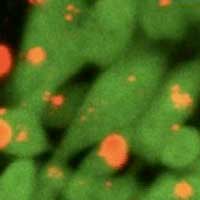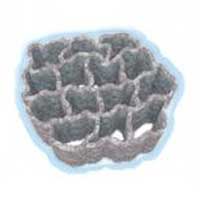 Controlling the interactions at the interface of a magnetic/topological insulator heterostructure is an outstanding challenge with implications in fundamental science and technology. New resesearch has shown that ligands from metal-organic molecules can be used to tailor the properties of these interfaces.
Controlling the interactions at the interface of a magnetic/topological insulator heterostructure is an outstanding challenge with implications in fundamental science and technology. New resesearch has shown that ligands from metal-organic molecules can be used to tailor the properties of these interfaces.
Wednesday, April 29, 2020
Molecules with a spin on a topological insulator: a hybrid approach to magnetic topological states of matter
 Controlling the interactions at the interface of a magnetic/topological insulator heterostructure is an outstanding challenge with implications in fundamental science and technology. New resesearch has shown that ligands from metal-organic molecules can be used to tailor the properties of these interfaces.
Controlling the interactions at the interface of a magnetic/topological insulator heterostructure is an outstanding challenge with implications in fundamental science and technology. New resesearch has shown that ligands from metal-organic molecules can be used to tailor the properties of these interfaces.
Researchers measure cancer cell mechanics in living animals using nanoparticles
 Scientists have developed a first-of-its-kind nanoparticle-based in vivo imaging technique that may one day be used to help diagnose and even treat cancer.
Scientists have developed a first-of-its-kind nanoparticle-based in vivo imaging technique that may one day be used to help diagnose and even treat cancer.
Stretchable lithium-ion battery is based on new micro-honeycomb structure
 Researchers developed a lithium-ion battery that is flexible enough to be stretched.
Researchers developed a lithium-ion battery that is flexible enough to be stretched.
Scientists proposed a new approach for efficient nanomaterials' modeling
 With the new modeling method, the calculations became simpler, which gives a possibility to predict the mechanical response to tension and to study its failure mechanism.
With the new modeling method, the calculations became simpler, which gives a possibility to predict the mechanical response to tension and to study its failure mechanism.
'Strange effect' raises possibility of smaller, smarter optical filters
 Polarization, in sync. On the macro, everyday level, it reads as an oxymoron. To nanoscientists, though, the apparent contradiction makes a kind of harmonious sense.
Polarization, in sync. On the macro, everyday level, it reads as an oxymoron. To nanoscientists, though, the apparent contradiction makes a kind of harmonious sense.
Perovskite/graphene nanosensor detects nitrogen dioxide with 300% improved sensitivity
 Graphene and perovskites hybrid resulted in a material that can more sensitively detect these kinds of gas.
Graphene and perovskites hybrid resulted in a material that can more sensitively detect these kinds of gas.
MRI scanning assists with next generation battery design
 Magnetic resonance imaging (MRI) can provide an effective way of supporting the development of the next generation of high-performance rechargeable batteries.
Magnetic resonance imaging (MRI) can provide an effective way of supporting the development of the next generation of high-performance rechargeable batteries.
MOF material offers optical sensing of NO2 pollutant for air quality measurements
 This proof-of-concept material would be sensitive enough to detect straightforward low concentration of NO2 in conventional luminescence displays.
This proof-of-concept material would be sensitive enough to detect straightforward low concentration of NO2 in conventional luminescence displays.
Scientists outsmart nature by building super liquid-repellent dry adhesives
 A specific fibril tip shape design is the key to achieving elastic dry fibril adhesives with super liquid repellency. This new bioinspired material opens up many possibilities for use, as it prevents any form of liquid droplet or layer from hindering or degrading its adhesion.
A specific fibril tip shape design is the key to achieving elastic dry fibril adhesives with super liquid repellency. This new bioinspired material opens up many possibilities for use, as it prevents any form of liquid droplet or layer from hindering or degrading its adhesion.
Subscribe to:
Posts (Atom)
